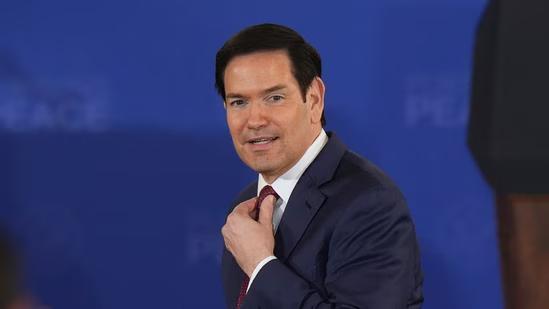
We Keep an Eye on India & Pak Situation Every Single Day: US
The ongoing tensions between India and Pakistan have been a cause of concern for the international community, and the United States is no exception. In a recent statement, US Secretary of State Marco Rubio revealed that the US “keeps an eye” on the situation between the two nuclear-armed neighbors “every single day”. This statement comes amid increasing tensions between India and Pakistan, with both countries accusing each other of ceasefire violations and military buildup along the border.
Rubio’s statement is significant because it highlights the US’s continued focus on the region and its willingness to engage with both countries to find a peaceful resolution to the conflict. The US has long been a key player in regional affairs, and its involvement is crucial in maintaining stability and preventing conflict.
But what exactly does Rubio mean by “keeping an eye” on the situation? In the context of international relations, “keeping an eye” means monitoring the situation closely, often through diplomatic channels, intelligence gathering, and other means. This can include tracking ceasefire agreements, monitoring military movements, and engaging with local leaders and officials to understand the ground situation.
Rubio’s statement suggests that the US is taking a proactive approach to addressing the tensions between India and Pakistan. By “keeping an eye” on the situation, the US can identify potential flashpoints and work to prevent them from escalating into full-blown conflicts. This is particularly important in the context of the India-Pakistan border, where a single misstep can have disastrous consequences.
But what about the ceasefire agreements that both countries have signed? Rubio’s statement suggests that these agreements are fragile and can “fall apart very quickly”. This is a sobering assessment, given the history of ceasefire violations between India and Pakistan. The two countries have signed numerous ceasefire agreements over the years, only to see them broken repeatedly.
So, what is the US aiming for in the context of the India-Pakistan situation? Rubio’s answer is clear: the US is aiming for a “peace deal”, not just a ceasefire. This is a significant shift in the US’s approach to the region, as it suggests a willingness to engage with both countries on a deeper level and work towards a more comprehensive solution.
In the context of the Russia-Ukraine conflict, Rubio’s statement takes on a new significance. The US has been vocal in its support for Ukraine, providing military aid and economic support to help the country defend itself against Russian aggression. Similarly, in the context of the India-Pakistan conflict, the US may be looking to provide support to both countries to help them find a peaceful resolution to their differences.
But what does this mean for the region? For one, it suggests that the US is willing to engage with both countries on a deeper level, rather than simply taking sides. This can help to build trust and foster a more constructive dialogue between the two countries.
Secondly, the US’s involvement can help to provide a degree of stability to the region, which is critical in the context of the India-Pakistan conflict. With tensions running high and military buildup on both sides, the risk of a full-blown conflict is ever-present. By engaging with both countries and working towards a peace deal, the US can help to reduce the risk of conflict and promote a more peaceful resolution to the conflict.
Finally, the US’s involvement can help to promote regional stability and security. The India-Pakistan conflict is just one piece of a larger regional puzzle, with other conflicts and tensions simmering in the background. By engaging with both countries and working towards a peaceful resolution, the US can help to promote regional stability and security, which is critical in the context of global affairs.
In conclusion, the US Secretary of State Marco Rubio’s statement that the US “keeps an eye” on the situation between India and Pakistan “every single day” is significant because it highlights the US’s continued focus on the region and its willingness to engage with both countries to find a peaceful resolution to the conflict. The US is aiming for a “peace deal”, not just a ceasefire, which suggests a willingness to engage with both countries on a deeper level and work towards a more comprehensive solution.
By “keeping an eye” on the situation, the US can help to prevent conflict and promote regional stability and security. This is critical in the context of global affairs, where the India-Pakistan conflict is just one piece of a larger regional puzzle. As the situation continues to unfold, it will be important to monitor the situation closely and work towards a peaceful resolution to the conflict.
Source:



